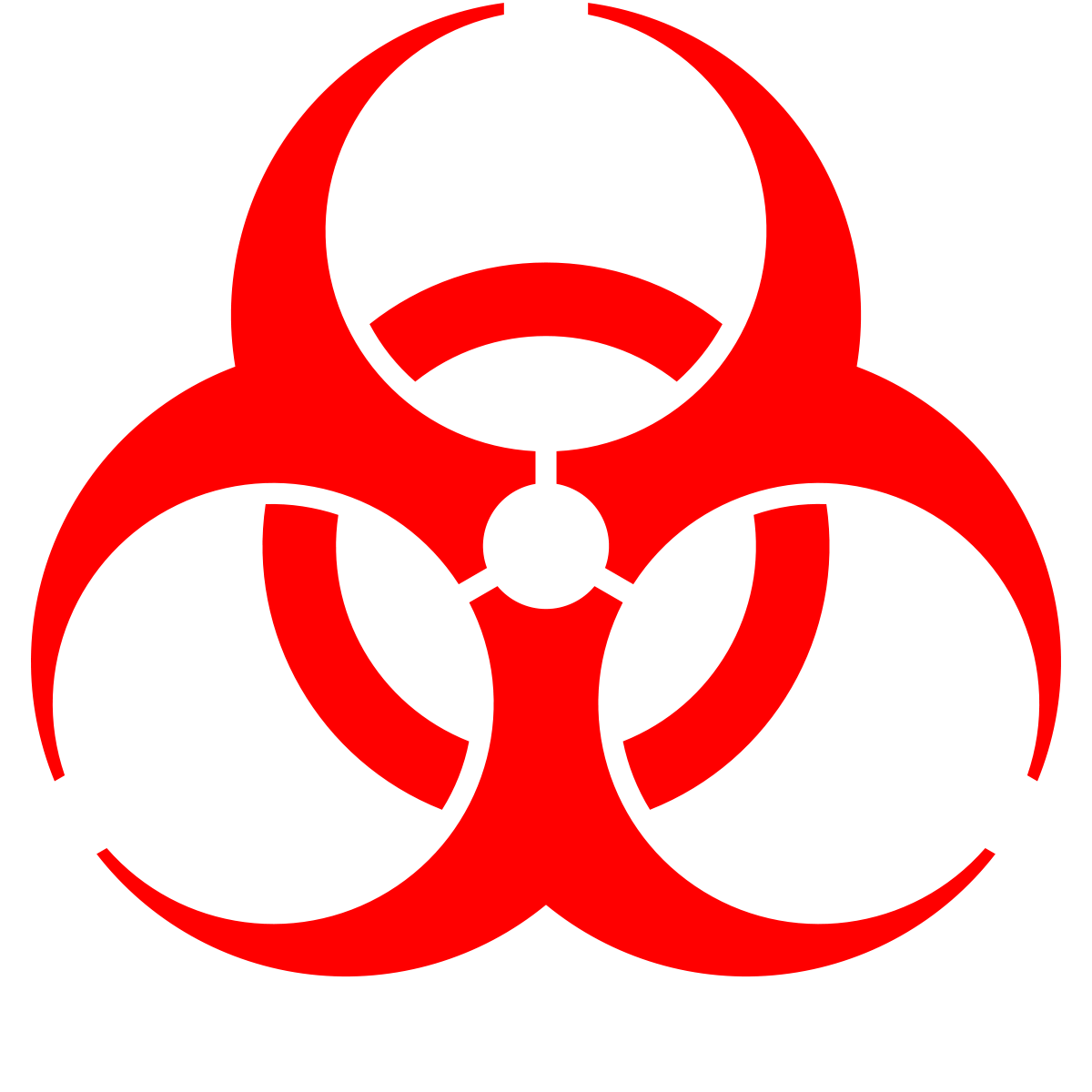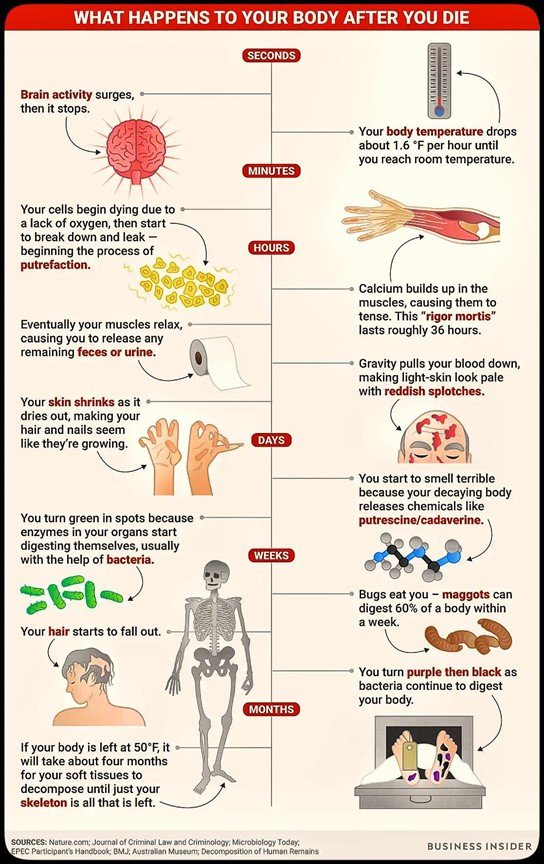Do You Know the Four Stages of Human Decomposition?
Often you hear the term “Decomp” which stands for decomposition, used on TV and films to describe a body found after some time has passed. The scene on TV is always the same, several seasoned officers staring down at the body discussing the crime and noticeably making faces about the smell of the body in the air as the new guy hangs in as long as he can take it before running out to visibly get sick. In real life, the smell of decomposition isn't an easy odor to handle that is for sure. It can often surround the property for 50 feet or more. As a Biohazard specialist we at Clean Scene Services have come across many levels of decomposition on a cleanup site.
In an unattended death, the deceased has been there for anywhere from a few days to several weeks and decomposition has started. Human decomposition is a natural process involving the breakdown of tissues by bacteria after death. Every living being will start the process of decomposition once death has occurred. According to Forensic Anthropology, human decomposition begins around four minutes after a person dies and follows four stages:
Autolysis
Bloat
Active decay
Skeletonization
The rate of human decomposition varies due to several factors, these include the weather, temperatures, moisture, pH and oxygen levels, general surroundings, cause of death, and body position. No matter the details, all human bodies follow the same four stages of human decomposition.
What happens when you die - Source: Nature.com
Stage One: Autolysis
The first stage of human decomposition is Autolysis, or self-digestion, and begins this immediately after death. As soon as blood circulation and respiration stop, the body has no way of getting oxygen or removing wastes. This causes an excess carbon dioxide which causes an acidic environment to form within the body, causing membranes in cells to rupture. The membranes release enzymes that begin eating the cells from the inside out.
At this point, Rigor mortis has set in causing the muscle to start stiffening. Small blisters form filled with nutrient-rich fluid begin appearing on internal organs and much of this can't be seen externally but the body is changing internally and soon after the skin’s surface will also start to change. The body will appear to have a sheen due to ruptured blisters within the skin, and the skin’s top layer will begin to loosen.
Stage Two: Bloat
As the body goes through stage one, the enzymes will spread and leak within the body and as they work they begin to produce many gases. the body will start to be noticeable changing. The sulfur-containing compounds that the bacteria release cause skin discoloration and due to the gases, the body will start to change shape as it fills with pockets of gases and starts to bloat. The human body can even double in size and depending on many factors it will become unrecognizable. This bloating can cause skin to break and some internal fluids may start leaking. Also it is at this point where insect activity starts to be noticeably present. In many cases when a body is found in a building or home in a state of decomposition, the area is filled with hundreds of flies and maggots. Police have told us that large amounts of flies on the windows inside a home can often a clue that there may be a "decomp" situation.
As the body bloats the microorganisms and bacteria produce extremely unpleasant odors called putrefaction. These odors often alert others that a person has died, and can linger long after a body has been removed. In addition to various gases, a dead human body releases around 30 different chemical compounds. The gases and compounds produced in a decomposing body emit distinct odors which anyone in the biohazard and crime scene cleanup business can tell you, its very distinctive and unpleasant. We use odor blocking respirators for this reason. When dealing with an unattended death scene that is in this stage of decomposition, we may be there for hours and days and most people cant handle the odors for minutes let alone hours so the proper PPE is necessary to get through the job.
Stage Three: Active Decay
In the Active Decay stage the bodily fluids are released through the orifices and the body is changing drastically because the internal organs and tissues are breaking down the gasses have escaped and the body is collapsing. This is the beginning of active decay. Organs, muscles, and skin become liquefied and leak from every orifice or split in the skin. When all of the body’s soft tissue decomposes, hair, bones, cartilage, and other byproducts of decay remain. It is this stage that he cadaver loses the most mass. The skin may wrinkle or split as the internal liquids escape.
From a biohazard cleanup situation standpoint, because a body begins decomposing immediately after death, biological hazards can damage personal belongings but at this stage the damages from the escaping bodily fluids can spread throughout a building’s structure, and the fluids and odors will permeate all porous materials.
Stage Four: Skeletonization
the last stage of decomposition is skeletonization. The stage where the body tissues have been broken down and have dried and all that is left is the bones. Because the skeleton has a decomposition rate based on the loss of organic (collagen) and inorganic components, there is no set timeframe when skeletonization occurs.
Body Decomposition Timeline
Many circumstances such as temperature and humidity are factors on this timeline but here is a general outline:
24-72 hours after death — the internal organs decompose.
3-5 days after death — the body starts to bloat and blood-containing foam leaks from the mouth and nose.
8-10 days after death — the body turns from green to red as the blood decomposes and the organs in the abdomen accumulate gas.
Several weeks after death — nails and teeth fall out.
1 month after death — the body starts to liquify.
In the decomposition of a human body, nearly every microorganism is involved in some aspect of the human decomposition cycle. Decomposition itself is a perfectly natural process but its important to understand that attempting to clean the scene is extremely dangerous because of the bacteria and possible exposure to bloodborne pathogens. It should be left to a professional crime scene and trauma cleanup company like Clean Scene Services. Because of the safety issues and visuals, after a death such as this, the smell of death can linger for some time, so a professional’s help is needed to help remove these odors and get the property back to a working order.
Remember in an unattended death, the accompanying bacteria, the odors, mold, and insect infestation, can cause damage to a building’s structure and personal belongings. After a body is properly removed, a professional biohazard and disinfection company like Clean Scene Services should always be called to clean and disinfect the site.


